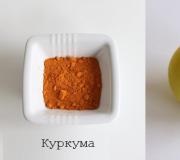How to make a tripod for your phone with your own hands at home. Homemade tripod: purpose, step-by-step instructions, tips and tricks Cardboard phone tripod
Finally, I got around to making some kind of device that allows me to fix the camera in a position convenient for video shooting. There are no problems with photography, but when shooting video, you need a third hand and that’s it. You have to pester those around you " ...well, take a minute while I'm here...", or make some kind of temporary device out of a standard three-legged mini tripod, various stands and tape securing it all. So, next time, in order to make a video, perhaps with something interesting for others, there is simply no moral and volitional effort. Judging by itself, the number of videos produced is much less than half of what could be done for the benefit of society.
I decided to start “from the stove”, or more precisely from the camera, from the node to which it will be directly attached. I “saw” this detail in a plastic strip from a video cassette. I cut out the supporting part for the bottom of the apparatus, in it there is a hole for a mounting screw and “ears” for fastening to the next unit.

This next unit, by chance, turned out to be a fastening element from the external antenna of an antique radio, which has three fixed positions. The glued plastic parts were additionally reinforced with miniature self-tapping screws and washers.

I connected the installation location of the camera and the unit that changes its fixed tilt using a long M4 screw and a nut located inside such a convenient and nice “twist”, with which you can also fix the set tilt position of the camera.

To mount the camera itself, a suitable screw was very successfully found. Its thread is not metric, but inch, equal to 1/4 inch, which is very close to the M6 thread (6.35 mm). A rubber stop - a handle - was firmly placed on the screw. The role of attaching the bracket to something (for example, a table top) was filled with something vaguely reminiscent of a small clamp (or you could just take one ready-made).

In the “clamp”, the smaller threaded hole was exceptionally suitable for the necessary connection with the existing structure. So all that remained to be done with it was to give it a strict black color using nitro varnish. To organize the clamp, a piece of brass with an M10 thread was useful, in which I drilled a hole with a diameter of 3 mm for the lever. The rubber piston from a medical syringe took its place at the end of the screw.

Ready tripod - bracket assembly. The rubber part at the end of the clamping screw is necessary to avoid damage to the surface of the furniture when using the finished device.

Well, this is all together with the camera. You can start shooting at any time videos.

A tripod - bracket is installed at the end of a shelf made of laminated chipboard. The camera lens is in a vertical position - ready to shoot a video message (sorry not Cicero) :-)


The camera lens is in a horizontal position. This is already for filming any process of amateur radio activity. How he managed to assemble a very necessary thing, literally “out of nothing,” or rather from what lies in the corners and boxes of any more or less creative person. Babay iz Barnaula.
Discuss the article HOMEMADE TRIPOD-BRACKET FOR A CAMERA
Website reader Evgeniy shares with us his version of a homemade photo tripod. The tripod design is simple, original and very reliable.
How to make a camera tripod with your own hands
Sometimes on occasion, at a party or in nature, you want to take a photo of everyone together. I would like to take a photo of my loved one against the background, for example, of a tornado or tsunami))). I would like to take pictures at night or in poor lighting. In all these cases, a tripod is required.
Homemade tripod
What to do if you need a photo tripod, but the family budget does not provide for such an expense item? Of course, there is a way out: make a tripod yourself. And do what is most suitable.
To assemble the tripod you will need:
1. Foam plastic.
2. Fabric (for example, a piece of an old sheet).
3. Epoxy resin.
4. Screw for attaching the camera to a tripod with an inch thread. Also suitable screws and washers, Grover, it would be great if you could find a wing nut for the connection screw. Look at the photo.
5. Paint, for example, black.
The tripod manufacturing scheme is as follows:
1. Weld washers with bolts. Weld one nut to the body washer. Any car service center will be able to help you in this matter. Before assembly, parts should be cleaned of welding slag and painted. At the car service center you will probably find an almost empty can of paint that you can use to immediately paint the parts.
2. Foam plastic is used for the base. The support is marked with a compass and cut out with a suitable tool.
3. Give the foam blank the desired shape by cutting and rounding the top edge. Sand the foam with sandpaper.
4. Mark a hole for gluing the washer with a welded nut and cut it out.
5. Cover the base with fabric using epoxy glue in 2-3 layers. Don't forget to glue in the nut and washer. Resin must not get on the threads!
6. While the resin hardens, you can assemble the bracket (see photos and videos).
7. Level the base of the tripod with a knife, sandpaper and putty.
8. Paint the base. Do not use nitro-based paints, otherwise the foam will blow away!
9. Screw the bracket into the nut - your homemade photo tripod is ready!
At some moments of photography, it may be necessary to statically fix the camera in order to avoid unnecessary shocks and vibrations, as well as in studio, subject shooting conditions. You need a tripod, but not all amateurs have the opportunity to purchase one. And then there is only one thing left - to make a tripod with your own hands. The same problem confronted me when I wanted to carry out subject photography. My advantage was that I had the opportunity to use different materials, as well as a welding machine. The assembly technology was borrowed from Vintik-Shpuntik - from what was at hand, without the use of turning. As a result of simple actions, such an accessory was born.

One of the main features was the screw itself that secures the camera to the tripod. Here we had to use a mounting head from an existing mini-tripod with plastic legs. As a result of this design, another tripod was created, specifically designed for winter photography. The base remains metal, and wood is used as legs. The tripod turned out to be quite light and tall, which was a plus in deep snow conditions.

The main part of both tripods is the replaceable control head, which I rearrange within a few seconds depending on the upcoming shooting.

P.S. Later on the site Aliexpress I had my eye on an inexpensive, lightweight, compact tripod

with acceptable characteristics at a low price


Ordered it 25 February… Registration on the site is not difficult - … AMarch 25 I already received the tripod in the mail. Delivery was within 4 weeks.



Main advantages: lightweight (just over 400 grams), compact, functional (you can shoot with the camera in both landscape and portrait orientation)... there is a built-in level. The tripod comes with a fabric case….
Those who are into photography know that in order to get a high-quality photo, you need to ensure that the focus is clear. This is done by securing the camera in a stationary position, for example, on a tripod. The latter are presented on the market by different models and manufacturers. They are not cheap, so they are purchased more by those who are engaged in photography professionally, or who are not short on money.
But, if desired, you can make a camera tripod yourself. In this case, inexpensive and accessible components are used, which allows us to ultimately obtain a reliable device, the consumer properties of which are no worse than those of factory ones.
There is no need to come up with your own design. The problem has long been solved by many craftsmen - you can take advantage of their suggestions. For example, as described below:
Components for a future tripod may include:
- Razors - you need three of them;
- Those that have served their time, but have not lost their appearance, are suitable;
- Small board;
- A bolt with a diameter of 5 mm and a length of 4...5 cm;
- Seal ring and bolt nut;
- Glue, for example, “Moment”; black enamel (can be replaced with Kuzbass varnish).
Work begins by preparing the wooden base. An isosceles triangle is cut out of the board, the sides of which are half a centimeter longer than the size of razor blades. In the center, using a drill, make a hole with a diameter slightly smaller than that of the bolt shaft.

Using force, screw the bolt into the resulting hole until its head touches the base. The corners of the wooden part are slightly rounded and the surfaces are polished; then covered with black paint or Kuzbass varnish.


Razor heads are glued from the blade side to the sides of the triangular base. The free end of the bolt should be directed upward - in the direction opposite to the direction of the razor handles.
Screw a nut onto the free end of the bolt and tighten it easily. This fixes the position of the bolt and prevents it from moving in the hole.
The tripod is ready. When using it, the ends of the razor handles are placed on the surface. A camera is attached to the top, at the protruding end of the bolt.






